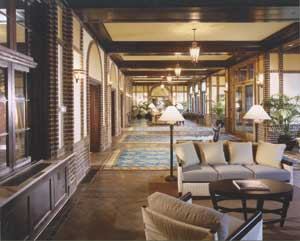Even properties in good shape are getting a facelift. Currens’ firm was recently hired by SSR Realty Advisors in Laguna Nigel, Calif., to work on Marina Pointe, an apartment community in Marina del Rey, Calif. The highly visible, Class A, 583-unit luxury apartment community, which cost SSR $117.15 million, is just 11 years old, shares a private cul-de-sac with three other luxury developments, has nearby retail, entertainment, and employment centers, and offers a parking ratio of more than two spaces per unit.
But despite all these advantages, Currens says that SSR executives knew that they would have to add amenities if they wanted the property to compete effectively in the West Los Angeles rental market. “Our intention is to invest $2.5 million for cosmetic and interior unit improvements in order to better position the property to be more competitive with the newer product in the market,” according to Dale Gruen, senior portfolio manager with SSR Realty Advisors.
Even owners of less luxurious communities see the need to invest in community spaces. Last year, Home Properties, a Rochester, N.Y.-based real estate investment trust, spent $100 million on renovations, two-thirds of which went to non-apartment features, including public areas, says Keith Knight, Home’s vice president of capital improvements. The company often buys Class C or C- properties in the East, upgrading them to a B or B+ through renovation.
Grand Entrances Owners are spending a lot of this renovation money on giving their buildings an upscale feel. That’s the case with the Calvert-Woodley, a 130-unit building in Washington, D.C. The building, which dates to the 1940s, is in a fabulous city location, according to Joann McInnis, vice president of client services with Carlyn & Co. Interior Design in Great Falls, Va., the project’s design firm. But she says the property was “dated.” To improve resident retention, owner Archstone-Smith refaced the concierge desk, modernized the carpet, put lighter colors on hallway walls, and provided more and better lighting.
The company also partitioned off a 12-foot-by-16-foot area of the lobby to create a small lounge with seating, bookshelves, a pair of computers, a printer, and a fax machine. “It’s a comfortable environment for their young, affluent clientele,” says McInnis.
Indeed, such common work and relaxation spaces are important to residents today, who have become accustomed to the Starbucks cafe culture. That’s why, at many properties, the formerly utilitarian business center is being transformed into a social gathering place for residents who work occasionally or regularly at home. After all, while few telecommuters need a business center that provides access to faxes or computers (most people have such technology at home), these work-at-home types do want a place that provides an antidote to cabin fever, a change of scenery, and a chance for human interaction, while also getting some work done.
That’s why Archstone-Smith is outfitting its properties with what it calls Click Cafés, which are upscale coffee shops with Internet access. One striking example is the Crystal Towers in the Crystal City, Va., where Archstone-Smith owns numerous properties. This Click Café consists of a pair of 30 year-old towers connected by an enormous ground-level lobby. To upgrade what was an impersonal public entrance space, the company set aside 25 percent for a Click Cafe. The hot spot is walled in with glass on two sides so that users can enjoy a view of the courtyard and the lobby. The busy space also adds life to the lobby area. “We are not averse to completely reconstructing areas to bring activity into the lobby,” says Al Neely, executive vice president with Archstone-Smith.
